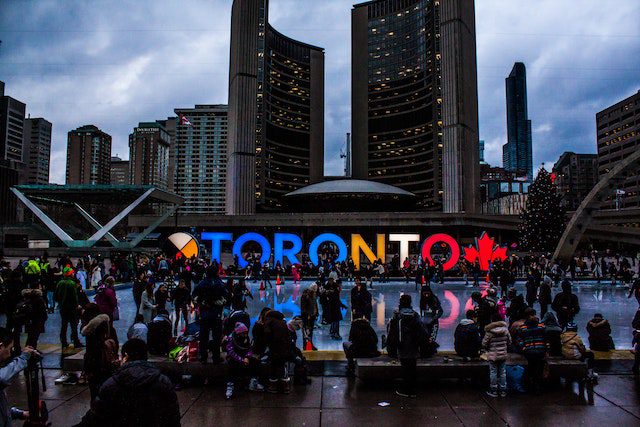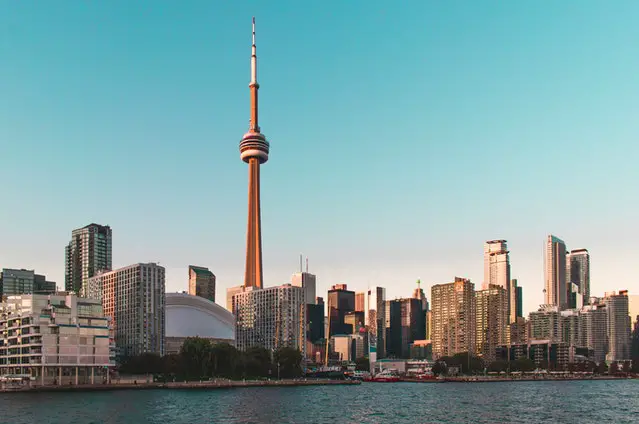
The question of which is better a student visa or a green card has been discussed for a long time.
Student visas and green cards are used for international students to study in a foreign country, but these are two different types of visas, so knowing which one is best for you can help you make a more informed decision.
There are many differences between a student visa and a green card in terms of eligibility criteria, length of stay, work permits, green card renewal, cost, the application process, etc.
We are going to show you those differences and how to make an appropriate choice.
What is a student visa?
A student visa is a document that allows students to travel and enter a country for the purpose of studying at an authorized educational institution.
The visa also allows these students to stay in the country while attending classes, as well as leave and return on occasion.
They usually issue a student visa based on an application that the student or their representative submits to a local embassy or consulate.
There are two types of temporary visas available: F-1 and M-1. The F-1 is for full-time students studying at a college or university, while the M-1 is for less than full-time students, such as high school students taking college courses abroad as part of their career plans. studies.
What is a ‘Green Card’?
Green cards are issued to people who live in the US and have been granted permission to stay in the country permanently. A green card is actually a residence permit; It allows you to stay in the US, work, go to school, and even receive benefits.
The green card was actually made out of thick paper. It has the same dimensions as your typical driver’s license but does not come with an identification number or photo like a driver’s license. There is also no information about your address, social security number, or anything else except your name and other identifying information.
When you get a green card, it comes from one of three sources: the US Customs and Immigration Service (USCIS), the Department of State (DOS), or the Department of Homeland Security (DHS). Most get their green cards through DHS because they are being sponsored by family members or employers already living in the US If you are entering the US as a refugee or asylee, you will receive your card from USCIS instead.
A green card can be obtained mainly in two ways:
Through Family Sponsorship: If a person has a relative (such as a spouse or parent) currently living in the US, he or she can apply for permanent residence through that relative’s documents (this process is called “adjustment of status”).
Through employment: Many companies hire foreign workers to fill open positions, giving these workers access to green cards; it is also possible for such workers to apply for green cards on their own.
Is a student visa the same as a green card?
A student visa vs. a green card is two different things. The US government issues the former, while the latter is a document that grants you permanent residence in the country. However, there are some similarities between them.
To apply for a student visa, you must have been accepted to an accredited college or university and have received a Certificate of Eligibility from the school. This form is a confirmation of your registration status and allows you to apply for an F-1 visa at the US Embassy or Consulate in your home country.
Once your application is approved, you will be able to travel to the US on an F-1 visa as a full-time student with no intention of working or remaining permanently in the United States after graduation (unless you qualify for authorization of employment OPT).
Once you complete your studies, if you decide to remain in the US, you must file Form I-485, Application to Adjust Status before your F-1 status expires (generally within 90 days of completion). . If this form is approved, you will be eligible to apply for an employment authorization document (EAD) card.
On the other hand, you can apply for a green card through different methods, such as the family-based, employment-based, or diversity lottery program. The process to apply for these categories is different from each other and takes several years before being approved or rejected by the United States Citizenship and Immigration Services (USCIS).
However, if you apply for your green card by taking advantage of the diversity lottery program, it will take only about six months before USCIS processes and approves your application, since there are fewer applicants in this category compared to others.
Can a student visa be converted to a green card?
The short answer is yes, despite the differences between student and green card, but there are some conditions that must be met before this can happen.
You can’t just turn in your student visa to get a green card so you can stay in the US permanently; you must qualify for one of several nonimmigrant status categories that allow permanent residence after meeting certain criteria (such as marrying a US citizen).
If you are not eligible for any of these categories, then there may be another way to obtain a green card.
This is through employment authorization after graduation from school or through family sponsorship of an immediate relative who is a U.S. citizen or permanent resident alien, that is, someone who has been granted lawful permanent resident status.
For example, if you have an F-1 visa and are studying at an accredited institution full-time, then yes, you can apply for an adjustment of status while still in school and receive your green card before graduation day.
What are the differences between a student visa and a green card?
Student visa vs green card: the differences
The biggest difference between a student visa and a green card is the time you are allowed to stay in the destination country.
Unlike a student visa, a green card is a permanent resident visa that allows you to live in the US permanently. You can apply for citizenship after five years, but many people apply earlier.
A student visa, on the other hand, allows you to study in the destination country for a limited period of time, usually one year or less.
There are also other differences between the student visa and the green card:
- Green cards are more expensive than student visas. Student visas can cost as little as $160, while green cards cost $585 or more (depending on your country of origin).
- Another difference between the student visa and the green card is that the green card requires an interview at a US consulate or embassy outside the US, and you need a new one quickly.
- If you are eligible, getting a green card through marriage or employment will be easier than getting one through school; those who qualify must still attend school to earn their green card with no gap in attendance.
Processing time between a student visa and green card
One of the most significant differences between a student visa and a green card is the processing time. For example, if you are applying for a student visa, it will take around 15 days for your application to be processed.
On the other hand, you can apply for a green card online in just minutes, but it will take months for USCIS to process your application before issuing it.
Do international students have a green card?
There are two main ways international students can obtain a green card: through their employer or through family sponsorship.
Employment Immigration
If you are working in the United States on an H1-B visa, you may be eligible to apply for permanent residence. This is called “adjustment of status.” Allows you to bypass the consular interview requirement that most applicants must complete when applying for their green card at a US consulate abroad.
family immigration
This is when someone petitions for another person called a beneficiary who lives outside of the United States. But within the borders of the United States usually, because they have family ties here, such as parents or siblings.
The applicant must meet certain requirements and must be approved by USCIS before the application can begin to be processed.
Can F-1 students apply for a green card?
Yes. F-1 students are eligible to apply for a green card if they meet the requirements. To be eligible, students must have held F-1 status for at least five years, or three years if they were married to a US citizen when they entered the country.
Also, they must have completed their course of study. In addition, have obtained a degree from an accredited US institution of higher learning.
They may also apply with a job offer in a field related to their field of study or be able to demonstrate that they will be able to subsidize without having to rely on public assistance while they wait for the green card application process to complete.
However, the application process can take up to two years to complete and be approved by USCIS (US Citizenship and Immigration Services). During this time, your student visa should not expire.
How to get a green card in the US for students?
If you have been in the US as an F1 student, you can apply for a green card. The steps to obtain a green card are as follows:
- Apply for a change of status to an H-1B visa if you have a job offer from an employer other than the one that sponsored your visa. You must still have a valid F1 student status.
- File Form I-140 Immigrant Petition for Alien Worker with USCIS. This will allow you to be eligible to apply for a green card at the US consulate.
- Have your priority date ready by filing Form I-485 Application to Register Permanent Residence. Your priority date is the day USCIS received your Form I-140. Usually the date it was filed, but could be later depending on processing time.
- If the US Embassy in your home country rejects your visa application, wait one year before reapplying; this will reset your priority date to zero so you can start over from scratch. This is as long as you meet all other eligibility criteria and requirements to obtain a green card.
F1 Student Visa for Green Card Options
If you plan to stay in the United States after graduation, you have two different options:
1 . OPT: Optional Practical Training (OPT)
OPT is good for 12 months and can be extended to 30 months. This allows you to work in the US while on an F-1 visa. This is only for practical training related to your studies. As a graduate student, this could include a co-op or internship with a US-based company to gain experience in your field.
2. H-1B visa
An H-1B visa is available to skilled workers in certain occupations such as science, engineering, and computer programming.
The H-1B visa allows you to stay in the United States for up to six years. Renewals are possible every three years as long as you continue to work for the same employer and meet other requirements.
3. Get an employer sponsorship
If you have an employer willing to help you get a visa, this is the best option. The process involves obtaining a formal job offer from the company and then applying for a work permit from USCIS.
You can apply for your green card under the employment-based first preference category after your EAD has been approved. There are two ways to get sponsorship from an employer:
Direct Hire: Your employer will file an I-140 petition on your behalf with USCIS. You must be currently working for this employer to qualify for a direct hire petition.
Indirect Hiring: If there are no job openings at your company, you may be hired through another company, as long as that company has an approved I-140 petition for you.
Conclusion
As you can see, both the student visa and the green card provide a path to US residency and citizenship, both with their own unique advantages and disadvantages.
When weighing your options, be sure to consider all the pros and cons of each type of visa or residency. Remember, one is not necessarily better than the other, it’s just a matter of preference.
Frequent Questions
One of the main differences between a green card and a student visa is that the green card is permanent. A green card holder can live as long as he does not commit any crime or violate immigration laws.
The answer depends on where you live, according to the United States Citizenship and Immigration Services (USCIS). If you live in Alaska, Arizona, or California, your card is valid for 10 years. If you live in Delaware, Florida, or Georgia, it is valid for two years. All other states get an eight year card.
Yes! As long as you have a valid passport from your country of citizenship (or another country). You can travel internationally with your green card and return home without any problem.
You can apply for renewal 90 days before it expires (or 180 days if your documentation is lost or damaged). If your application doesn’t arrive on time, please keep checking back at least once a week until the day arrives.

















